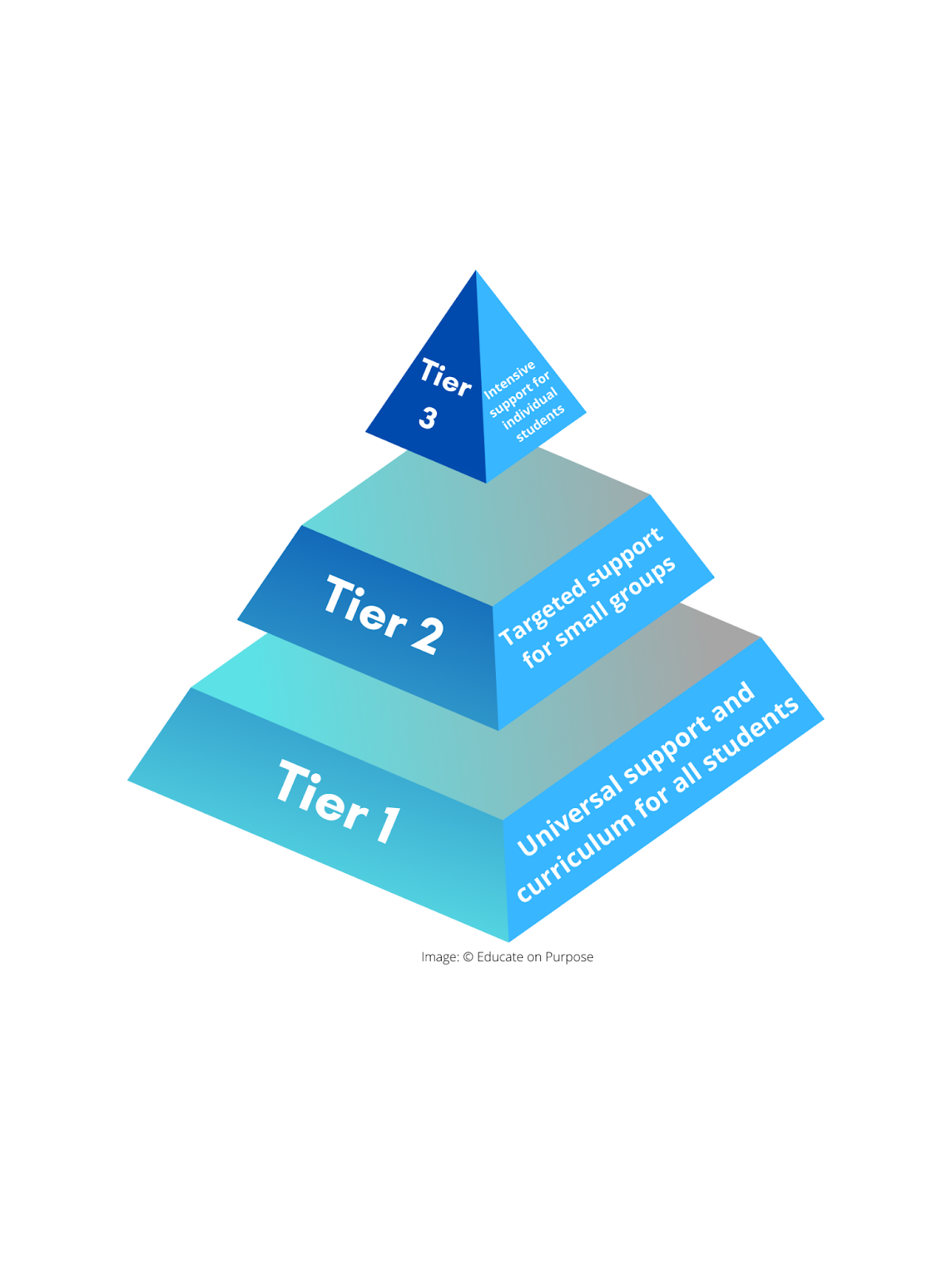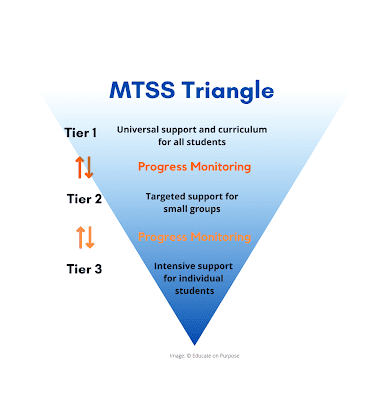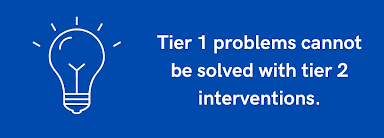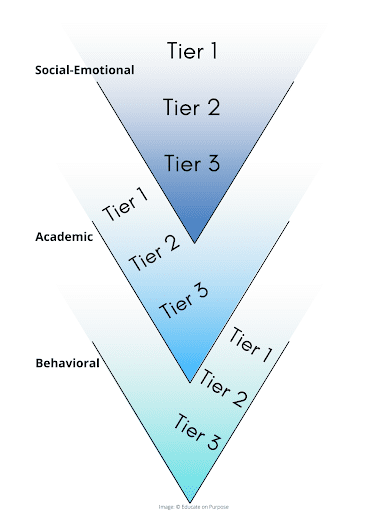A Multi-Tiered System of Support (MTSS) is a framework designed to meet the needs of each and every learner in a school district. In 2015, the Every Student Succeeds Act (ESSA) defined a multi-tiered support system as “a comprehensive continuum of evidence-based, systemic practices to support a rapid response to students’ needs, with regular observation to facilitate data-based instructional decision-making.’’ This comprehensive continuum comprises three components: academic, behavioural, cultural, and social-emotional learning. Each of the components has three tiers of support: universal, targeted intervention, and intensive individual support.
So . Many . Acronyms .
There are similarities and important differences between MTSS and Response to Intervention (RTI), Individualized Education Programs (IEPs), and Positive Behavioral Interventions and Supports (PBIS).
RTI was a result of the reauthorization of The Individuals with Disabilities Education Improvement Act of 2004 and was designed to focus on identifying and supporting students who have specific learning disabilities.
An IEP is a program, required by law, designed for and specific to any student who is receiving special education services.
PBIS is a three-tiered framework that establishes and promotes social-emotional behaviors that improve student academic success. The PBIS framework with its integration of data and evidence-based practices into daily routines is very similar to MTSS.
MTSS integrates PBIS and RTI into one comprehensive system.

MTSS is built upon the belief that schools and districts themselves have flaws that may prevent students from learning. The goal of MTSS is to have supports and resources in place so they may be seamlessly put into practice as a result of data-based monitoring. MTSS implementation is rooted in a benefit mindset. It uses tools that most schools currently have and views them with a new lens seeing the system as the component that needs to be fixed. This is very different from the traditional support systems which force students to fit into standardized systems.
Getting started with MTSS
The first step to implementing MTSS is taking an inventory of current methods of academic, behavioral, and social-emotional instruction and resources available from administration, teachers, counselors, non-academic staff, families, and the community to support students. Next, determine which tier is best suited for the identified resources.


With a current inventory of leveled supports, schools can easily identify gaps in support available to students at each level. For instance, there may be extensive resources available to some students who are in need of targeted, small group (tier 2) behavioral instruction but limited support for the few students in need of intensive, individual (tier 3) support. This would prompt a search for community partners to provide wraparound services.
If a school discovers that there are numerous interventions in place for tier 2 targeted academic support in Mathematics and few for universal curriculum, they will be prompted to explore tier 1 measures that can be taken to decrease the need for tier 2 academic support in Mathematics.

Benefits of MTSS
MTSS has the potential to be a transformative system-wide framework that supports students and staff by reimagining existing routines, resources, and interventions. This does not necessarily mean additional work for individuals but may involve a shift in mindset in order to identify and implement high-leverage practices for academic, behavioral, and SEL instruction. This is not a repackaged version of earlier initiatives, but a more effective method of recognizing and integrating RTI, PBIS, and resources that are currently available.
Once a school community has completed its inventory of instructional tools and supports for academic, behavioral, and social-emotional learning, it is time to move on to putting these resources into action.
The next steps include planning for three essential components of MTSS:
- Instruction that includes academic, behavioral, and SEL learning opportunities for all students.
- Assessment tools that measure the effectiveness of this instruction.
- Ensuring that your master schedule has space for per diem support for students.
MTSS is typically represented as a pyramid with Tier 1 universal supports being the foundation. It can be accurately represented as a triangle or funnel.

All students receive universal support and transition between tiers 1, 2, and 3 based on progress monitoring data. Progress monitoring is conducted according to a reliable universal tool at predetermined intervals. These tools do not need to be school-wide standardized tests. The American Institutes of Research (2021) recommends conducting high-fidelity screening that is universal and accurate at least quarterly.
In general, 80, 15, 5%
Most students will remain in tier 1, some will transition to tier 2, and fewer will move to tier 3. If a school community finds that a large number of students are in need of tier 2 support, it would be prudent to investigate the evaluation tools and quality of the universal curriculum being used.

Now, envision a system of three triangles, one for each indicator: academic, behavioral, and SEL. Students may be at any of the three tiers for each of the three instructional areas (academic, behavioral, social-emotional) at any one time. For example, a student may be receiving tier 1 instruction for academics, tier 2 targeted support for behavioral instruction, and tier 3 for social-emotional instruction.

Assessment tools that can help your school community provide common experiences without impacting teachers’ ability to use Universal Designed for Learning (UDL) planning tools. Instructional resources for each of the three tiers for academic, behavioral, and social-emotional instruction.



